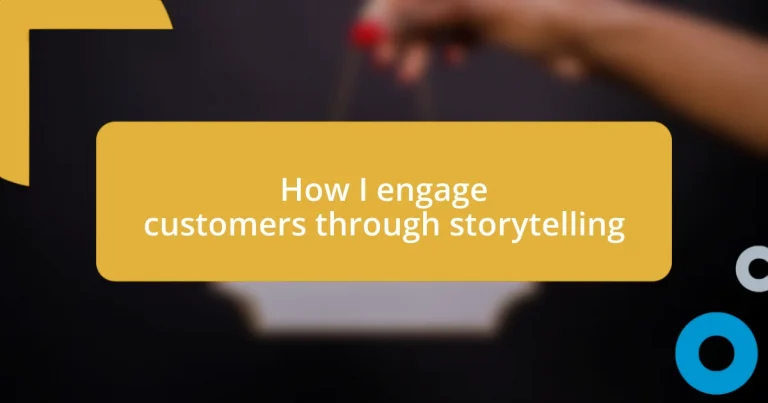Key takeaways:
- Storytelling in marketing creates emotional connections, enhancing customer loyalty and brand engagement.
- Effective stories include relatable protagonists, conflict, and resolution, fostering a sense of community among audiences.
- Multi-channel storytelling allows for tailored narratives across different platforms, enriching customer experiences and driving deeper engagement.
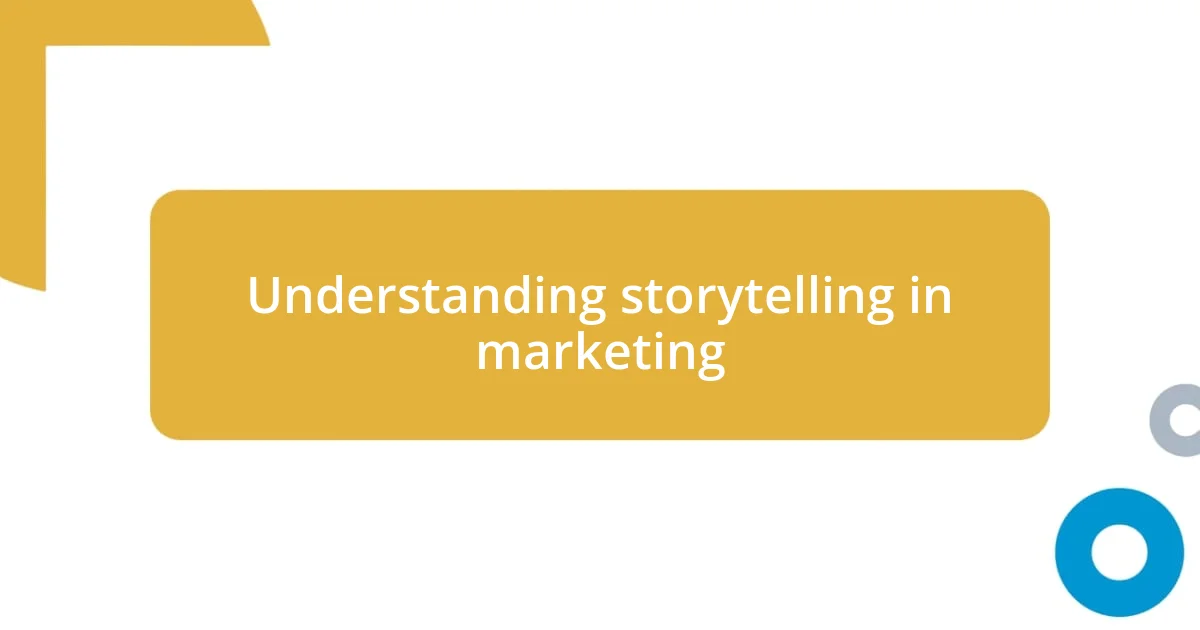
Understanding storytelling in marketing
Storytelling in marketing isn’t just a trendy buzzword; it’s a powerful method to connect with customers on a deeper level. I remember when I first attempted to craft a brand narrative for a small shop. Instead of just listing products, I shared the shop’s journey—how it started as a passion project in a garage. People bought not only the product but the story behind it, and that emotional connection led to increased loyalty.
One aspect that truly fascinates me about storytelling is its ability to elicit emotions. Have you ever noticed how a well-told story makes you feel? I often find myself laughing, crying, or reflecting, and that’s the magic of storytelling in marketing. By weaving emotions into your brand’s narrative, you create an experience that resonates with your audience, making them more likely to share their own experiences with others, thereby enhancing your brand’s reach organically.
When I think of effective storytelling, I can’t help but recall a campaign I was involved in where we used customer testimonials as narrative threads. Each story shared highlighted a unique challenge that our product helped solve. This approach didn’t just showcase our product; it illustrated genuine human experiences, making our brand relatable. How powerful is it when a customer sees themselves in a story, right? That’s the kind of connection that creates lasting impressions.
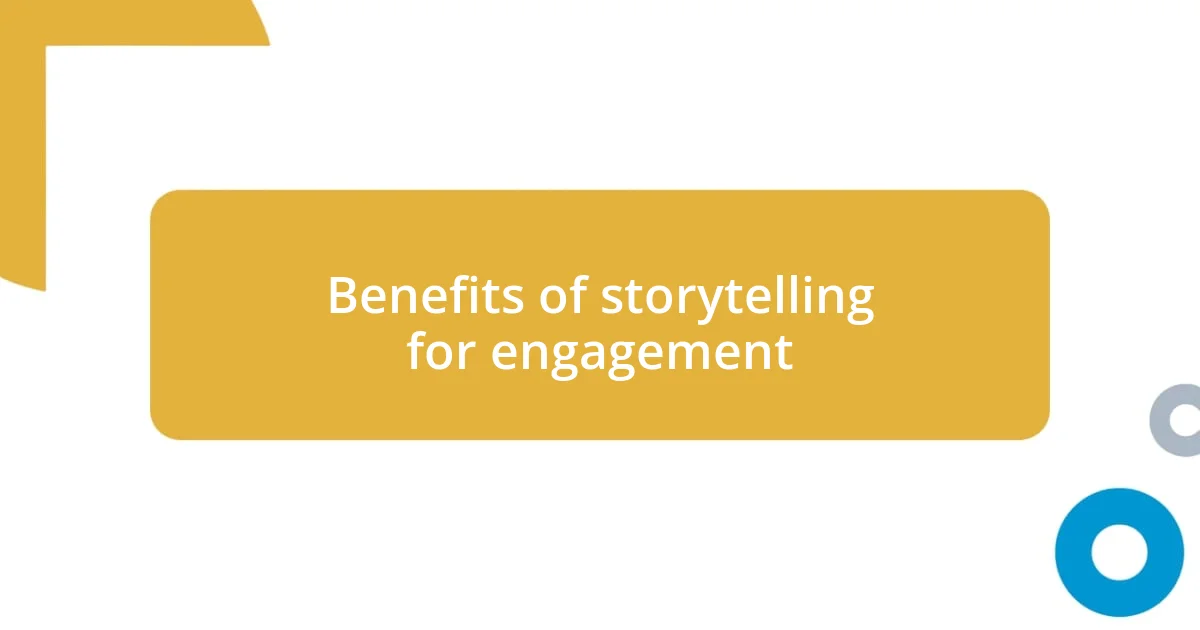
Benefits of storytelling for engagement
Storytelling has profound benefits for engaging customers. I’ve often seen how a compelling narrative can transform an ordinary product launch into a memorable experience. For example, during one campaign, we incorporated stories from our customers about how our product changed their lives. The response was overwhelming. People didn’t just engage with the product; they became part of something bigger—a community where their voices mattered.
Here are some key benefits I’ve observed in storytelling for engagement:
- Emotional Connection: Stories tap into emotions, fostering a deeper bond between your brand and the customer.
- Memorable Experiences: An engaging narrative makes your brand or product more unforgettable compared to traditional marketing.
- Fostering Loyalty: When customers relate to your story, they’re more likely to develop loyalty and stick around for the long term.
- Encouraging Sharing: Compelling stories often inspire customers to share their own experiences, expanding your brand’s reach through word-of-mouth.
- Strengthening Brand Identity: A well-crafted story can clarify your brand’s mission and values, making it easier for customers to connect with you on multiple levels.
Reflecting on these benefits, I can’t help but emphasize how storytelling has changed my approach to customer engagement. I’ve shared stories that highlighted customer triumphs, turning our marketing into a platform for celebration rather than just sales. This portion of my strategy became a genuine dialogue with, and for, our audience.
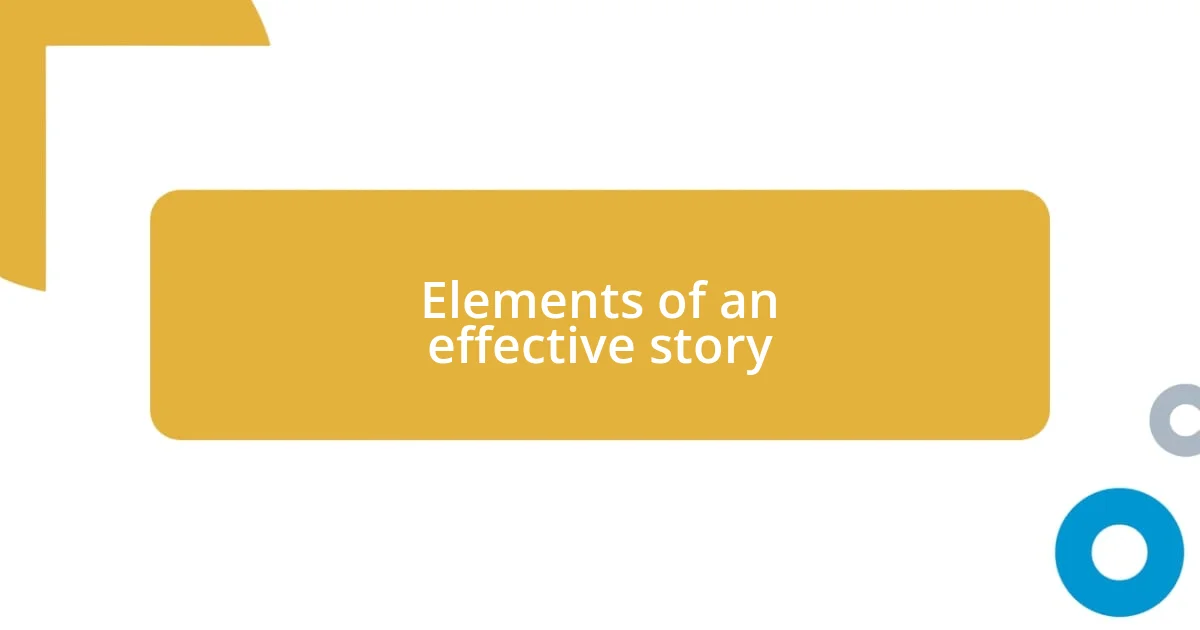
Elements of an effective story
The elements of an effective story work in harmony to create a resonant narrative. Personally, I’ve found that a relatable protagonist is essential; it allows your audience to see themselves in the journey. When I crafted a story featuring a customer overcoming adversity with our product, the response was incredible. It was as if the audience finally had a character to root for, sparking conversations among them and creating a sense of community.
Another critical element is conflict. Without challenges, stories become flat and uninspiring. I remember a campaign where we showcased a problem that our target audience faced daily. By illustrating these struggles and positioning our product as the solution, we not only captured attention but also prompted empathy. This emotional engagement is vital; it’s what turns casual viewers into invested customers.
Finally, every effective story needs a resolution that leaves the audience feeling fulfilled. In my experience, I’ve seen how a compelling conclusion can inspire action. After sharing a customer’s story that ended with positive results, many reached out to learn more about our offerings. It wasn’t just a sale; it felt like we were embarking on a shared journey.
| Element | Description |
|---|---|
| Relatable Protagonist | A character with whom the audience can identify and connect emotionally. |
| Conflict | A challenge or problem that creates tension and drives the narrative forward. |
| Resolution | A satisfying conclusion that provides closure and encourages further engagement. |
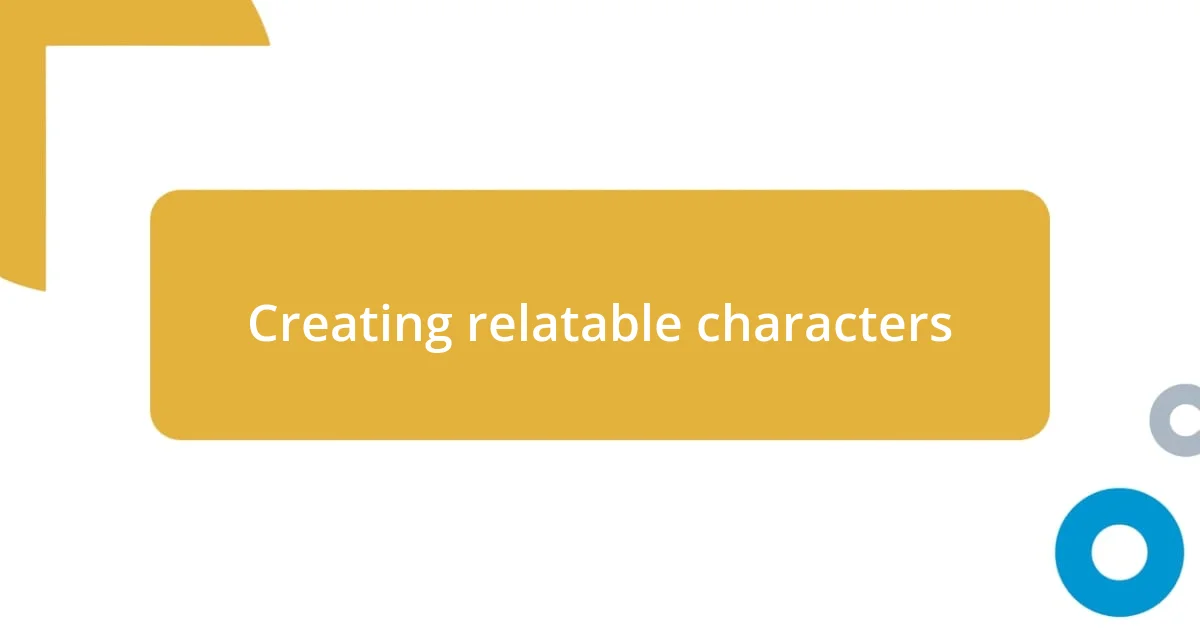
Creating relatable characters
Creating relatable characters is foundational in storytelling. Think about the last time you read a story or watched a movie—didn’t you find yourself gravitating towards characters that felt like real people? I’ve often crafted characters based on actual customers, combining their quirks, hopes, and struggles. This approach not only humanizes the narrative but also invites the audience to see themselves in those characters.
When I designed a campaign around a character who started out uncertain but evolved into a confident user of our product, it struck a chord. People shared how they felt that character was a reflection of their own journey. The effect was palpable—by seeing someone else navigate the challenges they faced, they felt supported, almost as if they were part of a larger story unfolding together. Isn’t it powerful how a relatable character can turn a solitary experience into a communal journey?
Another layer to this is authenticity. One of my favorite moments was when a character I created had a funny mishap while trying to use our product. Instead of perfection, the audience saw a delightful imperfection that made the character endearing. This nudged viewers to laugh and think, “Hey, that’s me!” In my experience, characters that embody authenticity not only foster connection but reframe the narrative, allowing it to become inclusive and inviting.
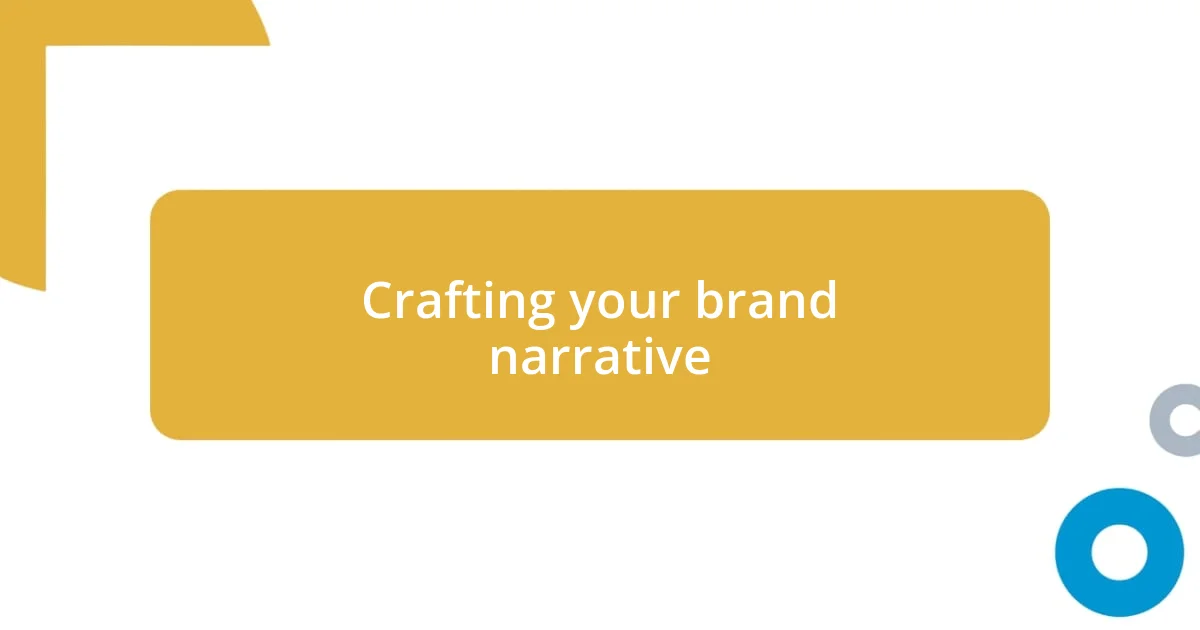
Crafting your brand narrative
Crafting your brand narrative is an exciting journey, much like writing a story that captivates an audience. One of my favorite moments was when I distilled our brand’s core message into a single story arc. It wasn’t easy, but when I focused on the values our customers uphold—sustainability and community—I began to see how these elements could weave together into a compelling narrative that resonated. Have you ever thought about what your brand truly stands for?
I recall brainstorming sessions where we explored the different facets of our brand’s personality, like flipping through a photo album of memories. Each idea was tied to real experiences, and I made sure to include our brand’s origin story—how we started and the hurdles we faced. This genuine backdrop not only connects with people emotionally but also paints a vivid picture of our journey. At that moment, I realized that sharing our struggles helped us build a bridge to our audience, making them feel like they were part of something bigger.
Moreover, I’ve found that consistent messaging plays a crucial role in maintaining a strong narrative. When I synchronized our social media posts with the overarching story of empowerment we wanted to convey, the engagement was overwhelming. I often ask myself, how can I ensure every touchpoint reflects our narrative? It became clear that while storytelling is an art, crafting a brand narrative requires a deliberate approach—one that not only speaks to our audience but also invites them to be co-authors in our journey.
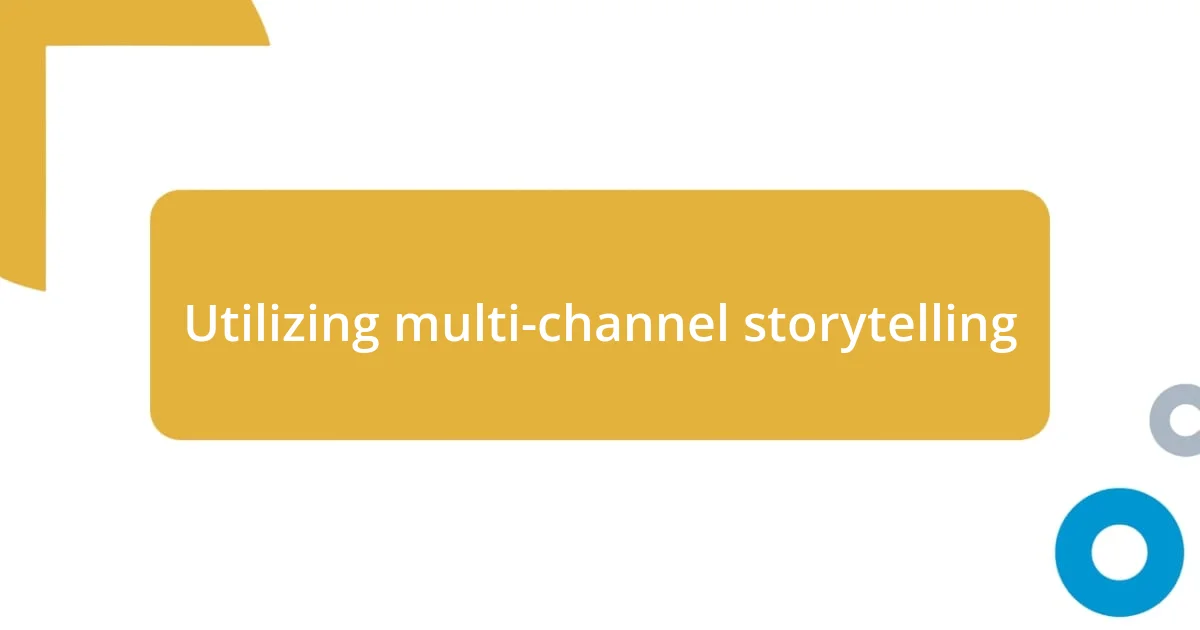
Utilizing multi-channel storytelling
Utilizing multi-channel storytelling can dramatically enhance how we connect with our audience. I remember launching a campaign that spread across social media, emails, and even podcasts. One particular story featured a customer’s transformation journey with our product. Across channels, we tailored the narrative: vibrant visuals on Instagram, heartfelt testimonials in our newsletters, and deeper insights shared on podcasts. This cohesive approach not only grabbed attention but created a holistic experience, allowing customers to engage with the story in the way that felt most comfortable for them.
I’ve discovered that each platform brings its own flavor and style to storytelling. For instance, while Twitter is perfect for quick snippets that spark curiosity, longer stories on our blog give space for nuance and depth. Reflecting on my experience, I often think about the memories we create through these channels. Have you ever come across a story that lingered in your mind long after you read it? That’s what I aim for—providing that lingering connection. By adapting the narrative to fit the nuances of each platform, I’ve seen how it captivates varied segments of my audience.
One of my proudest moments came when I used audience feedback to shape our multi-channel storytelling approach further. Customers began sharing their own stories, and we incorporated them into our campaign. I was amazed by how much more resonant our content became—such genuine voices added authenticity. It made me realize that inviting customers to share is a brilliant way to deepen their connection with the brand. How often do we think about storytelling as a two-way street? Connecting through multi-channel storytelling fosters a dialogue rather than just a monologue, reinforcing that we’re all part of this narrative together.
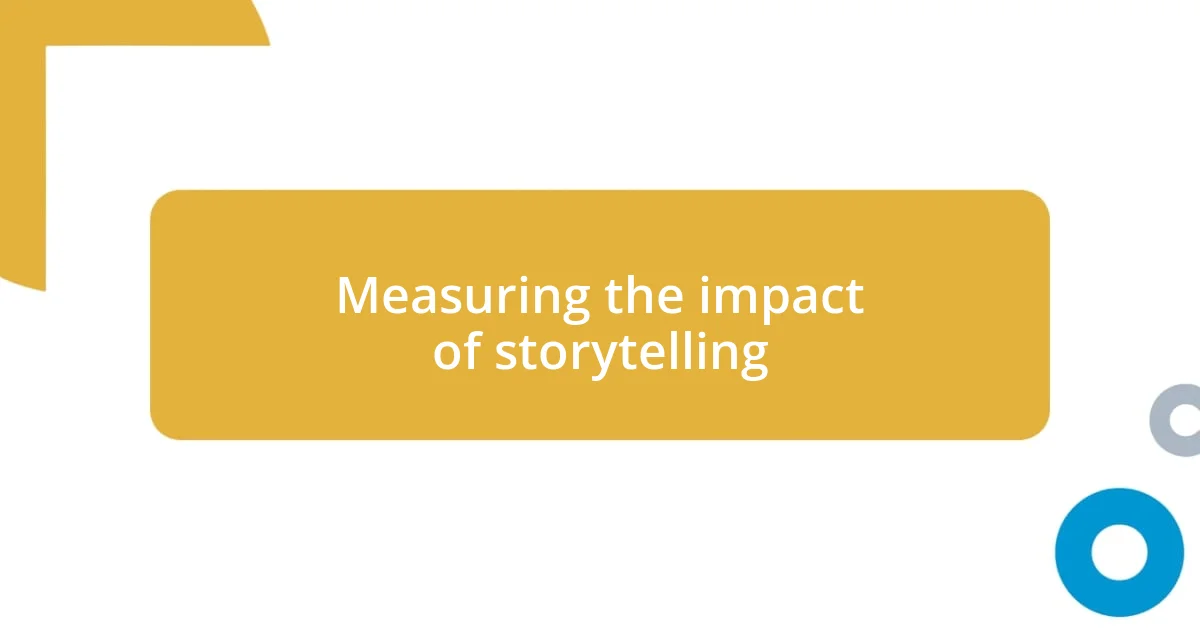
Measuring the impact of storytelling
Understanding the effectiveness of storytelling can be quite revealing when you start tracking its impact. I remember initiating a project where we implemented storytelling across our marketing strategies. After a few months, I analyzed the engagement metrics, and the numbers spoke volumes—our conversion rates increased substantially. This made me ponder: could it be that stories create stronger connections than traditional marketing tactics?
I’ve also noticed how customer feedback plays a pivotal role in measuring storytelling’s impact. One day, I received a heartfelt email from a customer who mentioned how our story resonated deeply with her own journey. That kind of emotional response is priceless—it’s proof that storytelling can foster genuine relationships. When reviewing such testimonials, I often ask myself how I can create more moments that elicit similar emotional connections.
Finally, there’s something magical about storytelling when it comes to brand recall. I find that customers are far more likely to remember our brand when they can recall a story behind it. In a content-rich world, this stands out as a vital metric. Reflecting on my own experiences, isn’t it fascinating how a simple narrative can stick in our minds longer than facts or figures? Through both qualitative and quantitative measures, storytelling has illuminated pathways to deeper engagement that I never fully anticipated.












